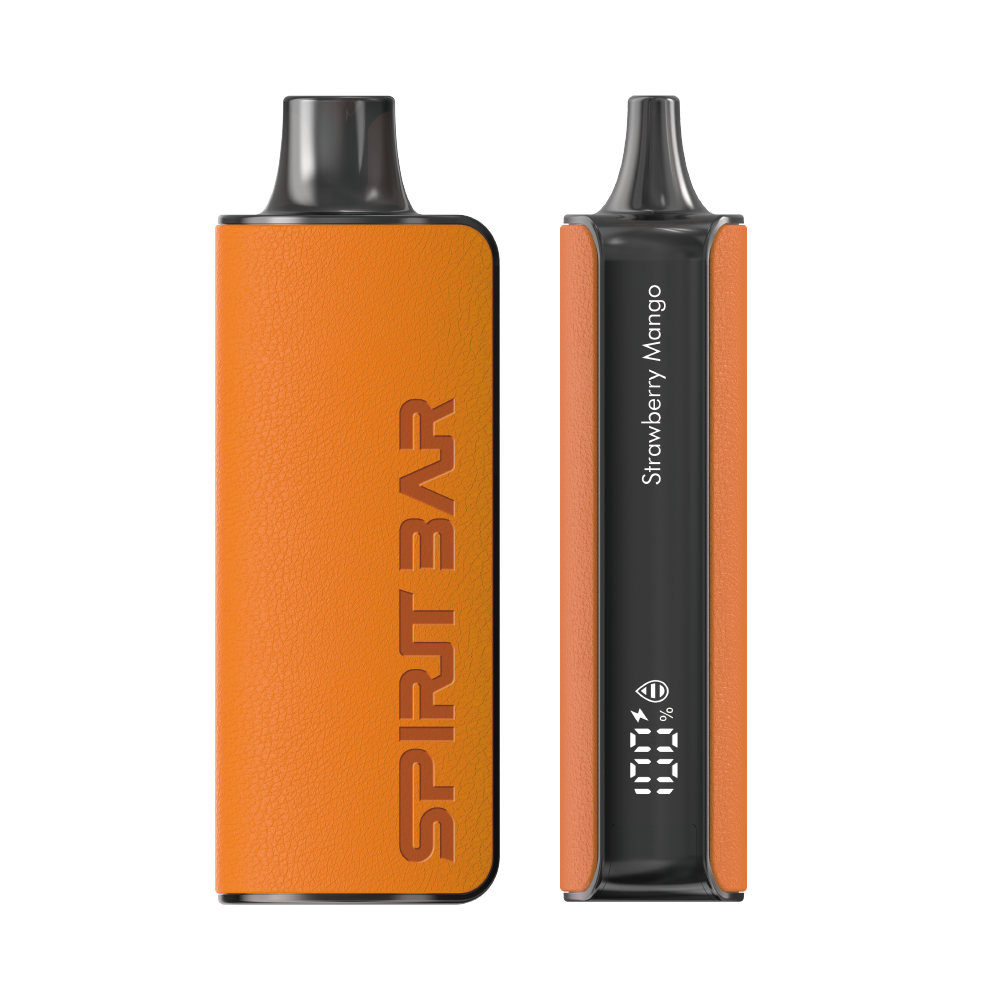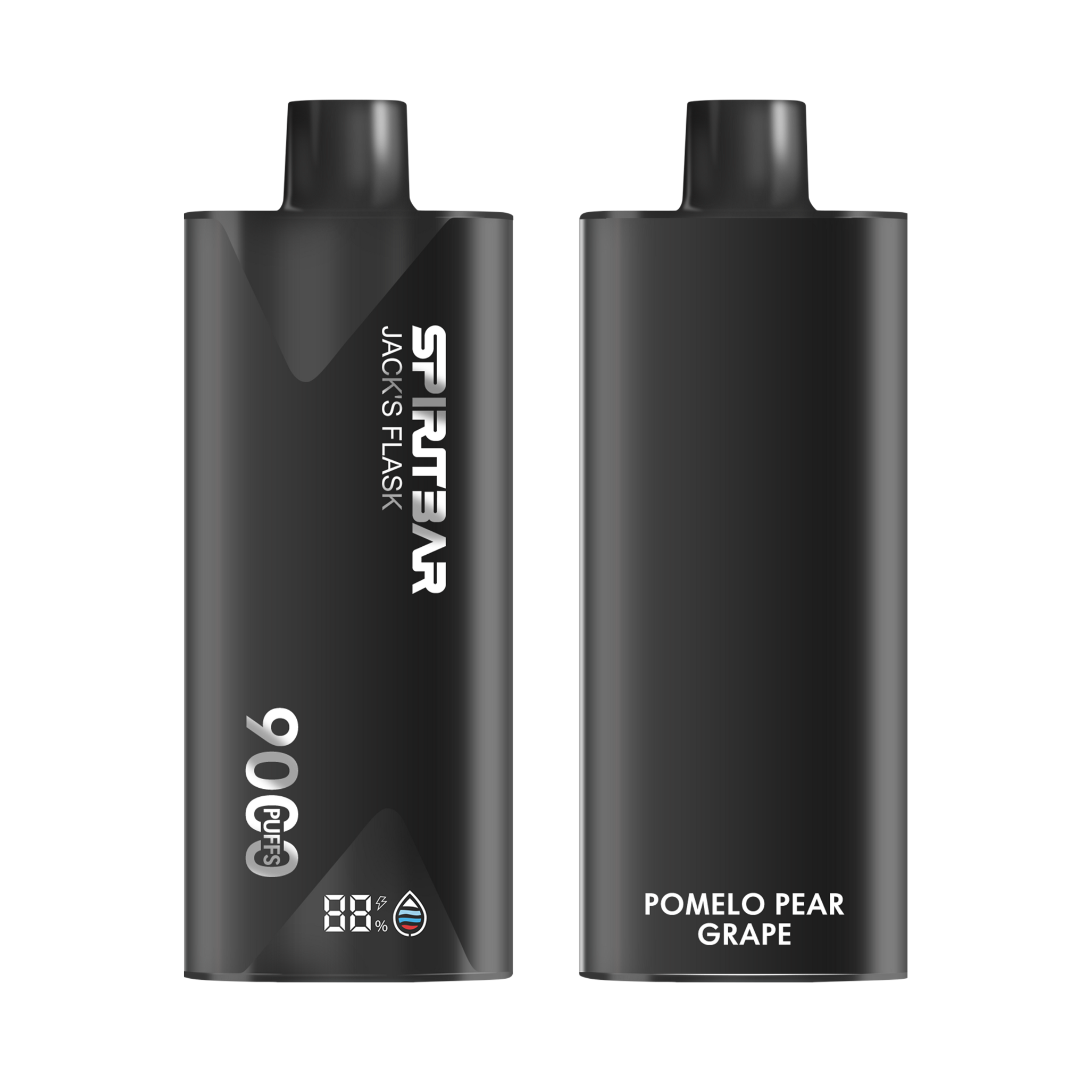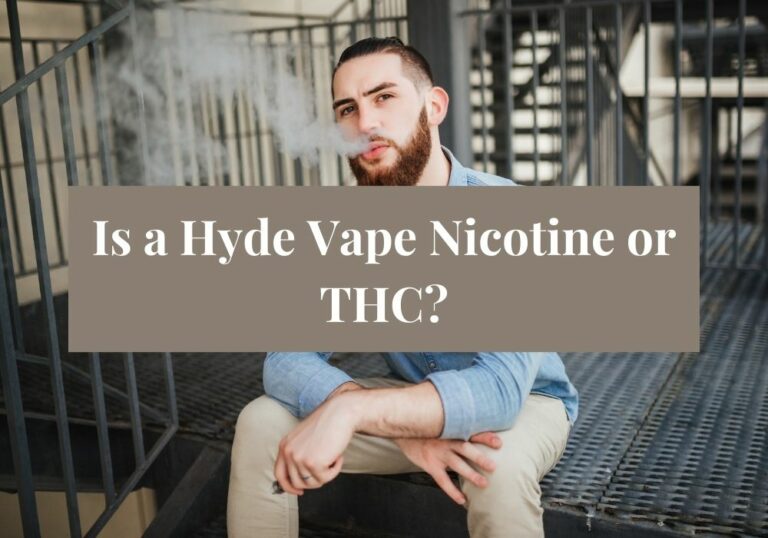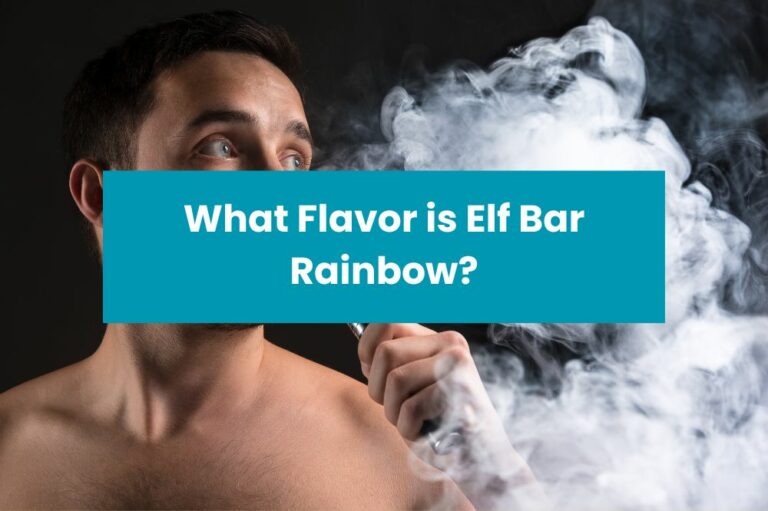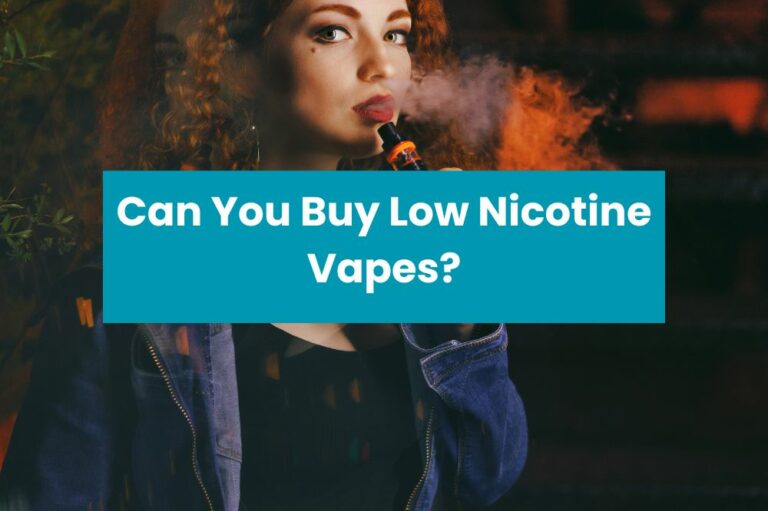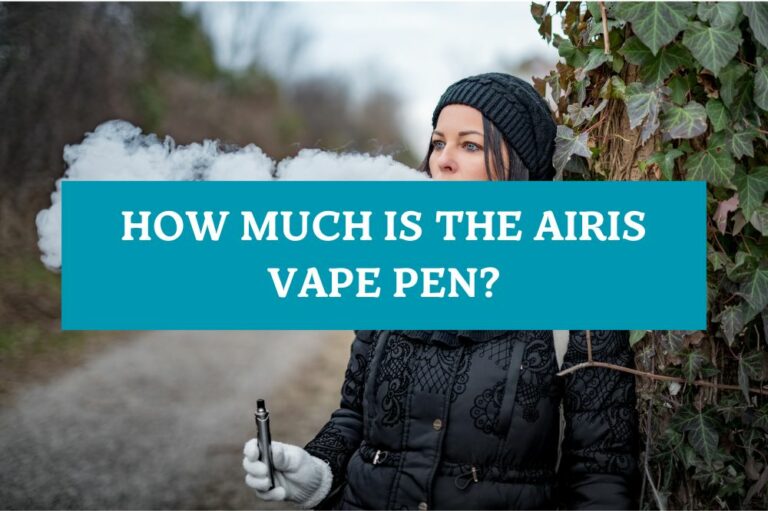Is Vape Smoke Smoke or Vapour?
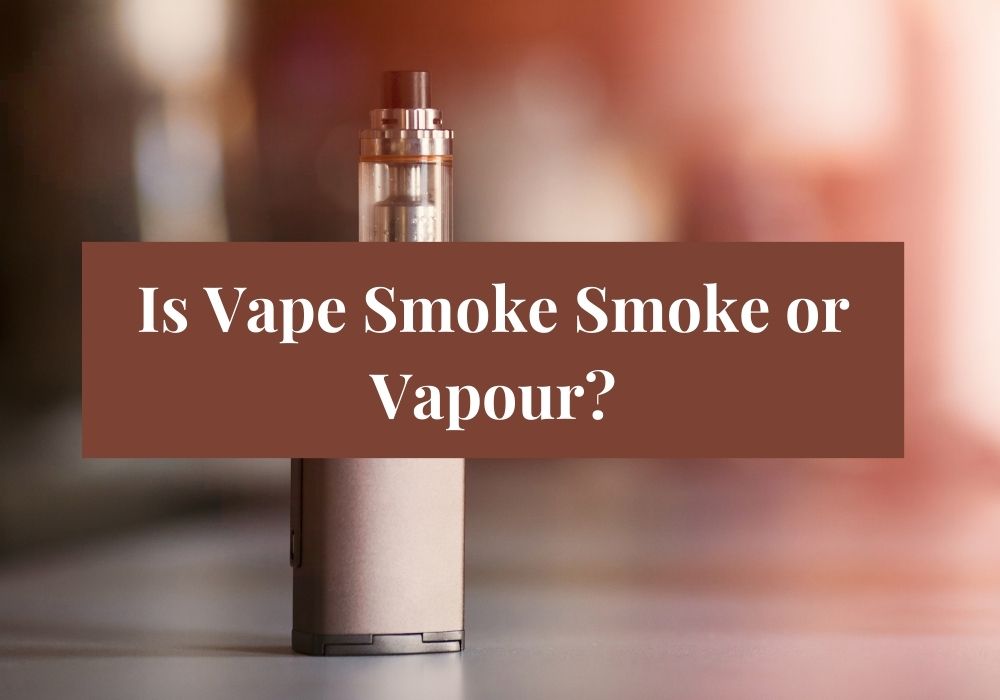
If you’re new to vaping, you may be wondering whether the clouds of mist you exhale are smoke or vapor. While the terms are sometimes used interchangeably, there is a significant difference between them. Smoke is the byproduct of combustion, while vapor is the result of heating a liquid or solid to the point where it turns into a gas.
When you light a cigarette, the heat generated by the burning tobacco causes the release of smoke, which contains a mixture of harmful chemicals and carcinogens. In contrast, e-cigarettes and other vaping devices work by heating a liquid (usually containing nicotine, flavorings, and other additives) to produce a vapor that can be inhaled. The vapor is created by a process called aerosolization, which involves heating the liquid to the point where it turns into a fine mist.
So, when you’re vaping, you’re inhaling vapor, not smoke. This is an important distinction because smoke is much more harmful to your health than vapor. Inhaling smoke can cause a wide range of health problems, including lung cancer, heart disease, and stroke. While the long-term effects of vaping are still being studied, most experts agree that it is a safer alternative to smoking.
What is Vaping?
If you’re new to the world of vaping, it’s important to understand what it is and how it works. Vaping is the act of inhaling and exhaling vapor produced by an electronic cigarette or other vaping device. Unlike traditional smoking, vaping doesn’t involve burning tobacco or other substances, which means that it doesn’t produce smoke. Instead, vaping involves heating a liquid (known as e-liquid or vape juice) to create a vapor that can be inhaled.
Components of a Vape
A typical vaping device consists of several components, including:
SPIRITBAR Katana BP10000
- Slender, leather-textured body reminiscent of a katana handle for an authentic samurai feel
- Unique samurai-inspired e-liquid flavor - fruity yet not too sweet, with a luxurious, elegant aroma
- Powerful 650mAh rechargeable battery for extended vaping time
- Large 18ml e-liquid capacity and 10,000 puff capacity
- Advanced mesh coil and e-liquid & power display screens for optimal vaping experience
The special juice captures the essence of the samurai spirit with its rich, smoothly pulsating flavor that brings new satisfaction with every puff. The device's slender, leather-textured design evokes the grip of a samurai's katana, making this product a perfect choice for beginner vapors.
- Battery: This is the power source for the device, and it’s usually rechargeable.
- Tank: This is where the e-liquid is stored.
- Atomizer: This is the part of the device that heats the e-liquid to create vapor.
- Coil: This is a small piece of wire that’s wrapped around a wick, and it’s responsible for heating the e-liquid.
- Mouthpiece: This is the part of the device that you put in your mouth to inhale the vapor.
Mechanism of Vaping
When you take a puff from a vaping device, the battery sends power to the coil, which heats up and vaporizes the e-liquid in the tank. The vapor is then inhaled through the mouthpiece. Some devices have buttons that you press to activate the heating element, while others are activated automatically when you take a puff.
Vaping devices can be used with a variety of e-liquids, which come in different flavors and nicotine strengths. Some e-liquids contain no nicotine at all, while others have high levels of nicotine. It’s important to choose an e-liquid that suits your preferences and needs.
Overall, vaping is an alternative to traditional smoking that involves inhaling vapor instead of smoke. While it’s not completely risk-free, vaping is generally considered to be less harmful than smoking. If you’re interested in trying vaping, it’s important to do your research and choose a device and e-liquid that’s right for you.
Understanding Smoke
When we think of smoke, we often think of the thick, dark clouds that are produced when something is burned. Smoke is the result of combustion, which is a chemical reaction that occurs when a substance is burned. This reaction produces a mixture of gases and particles, which we see as smoke.
Cigarette smoke, for example, contains over 7,000 chemicals, many of which are harmful to your health. When you inhale cigarette smoke, these chemicals enter your lungs and can cause damage to your respiratory system. This is why smoking is a leading cause of lung cancer, emphysema, and other respiratory diseases.
SPIRITBAR Jack’s Flask 9000 Puffs
- Stylish pirate flask-shaped body providing an exciting vaping experience
- Delivering up to 9000 puffs per device
- 20ml e-liquid capacity with 50mg nicotine strength for satisfying throat hit
- Specialized pirate-themed e-juice flavors for rich, swirling taste
- Premium mesh coil optimizes flavor profile for maximum vaping enjoyment
This disposable vape captures the daring spirit of the high seas with its flask styling and signature pirate e-juice flavors. The extraordinary battery life provides 9000 indulgent puffs for extended vaping pleasure. Live boldly and freely with the Jack's Flask - a legendary vaping experience fit for a pirate's adventures.
Smoke is also produced when you burn other materials, such as wood, coal, or gasoline. In addition to the harmful chemicals produced by cigarette smoke, these materials can produce other harmful substances, such as carbon monoxide and particulate matter.
Overall, smoke is a byproduct of combustion and can be harmful to your health. It is important to avoid exposure to smoke whenever possible, whether it is from cigarettes, burning materials, or other sources.
When it comes to vaping, it is important to understand that vapor is not the same as smoke. Vaping devices heat a liquid (usually containing nicotine) to produce a vapor, which is then inhaled. Unlike smoke, vapor does not result from combustion and does not contain the harmful chemicals found in cigarette smoke.
In the next section, we will explore the differences between smoke and vapor in more detail.
Understanding Vapour
Vapour is the gaseous form of a substance that is produced through vaporization. Vaporization is a process where the substance is heated to the point where it changes from a liquid or solid state into a gaseous form without undergoing combustion. This process is different from combustion, where a substance is burned, and smoke is produced.
Vapour is often used interchangeably with the term aerosol, which refers to a suspension of fine solid particles or liquid droplets in air or another gas. Vapour is not the same as smoke, which is a collection of airborne, solid, liquid, and gas particles that are mixed with the air. Smoke is visible due to the molecules of carbon and the substance that is being burned that are present within the smoke.
When you vape, you are inhaling vapour, not smoke. Vapour is created when e-liquid is heated by the atomizer coil in your vape device, causing it to vaporize. The vapour that you inhale is a combination of water, flavourings, and nicotine (if your e-liquid contains it). It is important to note that while vapour is not the same as smoke, it is still important to consider the potential health effects of inhaling it.
One of the main advantages of vaping over smoking is that vaping produces vapour instead of smoke. This means that vaping does not produce the same harmful chemicals that smoking does, such as tar and carbon monoxide. While there is still much research to be done on the potential health effects of vaping, it is generally accepted that vaping is less harmful than smoking.
In conclusion, vapour is the gaseous form of a substance that is produced through vaporization. It is not the same as smoke, which is a collection of airborne, solid, liquid, and gas particles that are mixed with the air. When you vape, you are inhaling vapour, not smoke. While there is still much research to be done on the potential health effects of vaping, it is generally accepted that vaping is less harmful than smoking.
Is Vape Smoke or Vapour?
If you’re new to vaping, you may be wondering whether the clouds of vapor you exhale are smoke or vapor. The answer is simple: vape clouds are vapor, not smoke. In this section, we’ll explore the chemical composition and physical properties of vape clouds to help you understand why.
SPIRITBAR Katana BP10000
- Slender, leather-textured body reminiscent of a katana handle for an authentic samurai feel
- Unique samurai-inspired e-liquid flavor - fruity yet not too sweet, with a luxurious, elegant aroma
- Powerful 650mAh rechargeable battery for extended vaping time
- Large 18ml e-liquid capacity and 10,000 puff capacity
- Advanced mesh coil and e-liquid & power display screens for optimal vaping experience
The special juice captures the essence of the samurai spirit with its rich, smoothly pulsating flavor that brings new satisfaction with every puff. The device's slender, leather-textured design evokes the grip of a samurai's katana, making this product a perfect choice for beginner vapors.
Chemical Composition
Unlike smoke, which is produced by the combustion of tobacco or other materials, vape clouds are created by heating e-liquid until it vaporizes. E-liquid typically contains a mixture of propylene glycol, vegetable glycerin, flavorings, and nicotine.
Propylene glycol is a colorless, odorless liquid that is commonly used as a food additive. Vegetable glycerin is a thick, sweet liquid that is derived from vegetable oils. Flavorings can be natural or artificial, and are used to give e-liquid its taste and aroma. Nicotine is an addictive substance that is present in some e-liquids.
When e-liquid is heated, it transforms into a vapor that you inhale and exhale as clouds. Unlike smoke, which contains thousands of harmful chemicals, vape clouds contain far fewer chemicals, and the ones that are present are generally considered safe for consumption.
Physical Properties
Vape clouds have a number of physical properties that distinguish them from smoke. For one thing, they are typically less dense than smoke, meaning that they dissipate more quickly and are less likely to linger in the air.
Vape clouds also tend to have a different smell than smoke. While smoke has a strong, acrid odor that can be unpleasant to some people, vape clouds can have a variety of pleasant smells depending on the flavor of the e-liquid.
Finally, vape clouds are generally considered to be less harmful than smoke. While inhaling any substance carries some risk, research suggests that vaping is significantly less harmful than smoking cigarettes. However, it’s important to note that vaping is not risk-free, and that more research is needed to fully understand its long-term effects.
In conclusion, vape clouds are vapor, not smoke. They are created by heating e-liquid until it vaporizes, and contain fewer harmful chemicals than smoke. While vaping is generally considered to be less harmful than smoking, it is not risk-free, and more research is needed to fully understand its effects.
Health Implications of Vaping
Vaping has become increasingly popular in recent years, but there are still many unknowns about its long-term health effects. While some people believe that vaping is a safer alternative to smoking, there are still risks involved. In this section, we will explore the short and long-term health implications of vaping.
Short Term Effects
The short-term effects of vaping can be both positive and negative. Some people report feeling a sense of relaxation and stress relief after vaping. However, there are also some negative short-term effects that you should be aware of. These include:
- Dry Mouth: Vaping can cause dry mouth, which can lead to bad breath, tooth decay, and other oral health problems.
- Irritation: Vaping can irritate your throat and lungs, causing coughing, wheezing, and shortness of breath.
- Headaches: Some people experience headaches after vaping, which may be due to the nicotine or other chemicals in the e-liquid.
Long Term Effects
The long-term effects of vaping are still not fully understood, but there are some concerns about the potential health risks. Here are some of the long-term effects that have been associated with vaping:
- Lung Damage: Vaping can cause lung damage, including inflammation and scarring of the lung tissue. This can lead to a condition known as popcorn lung, which can cause coughing, wheezing, and shortness of breath.
- Heart Disease: Vaping has been linked to an increased risk of heart disease, including heart attack and stroke. This may be due to the nicotine and other chemicals in the e-liquid.
- Cancer: While it is still unclear whether vaping can cause cancer, some studies have suggested that it may increase the risk of certain types of cancer, including lung cancer.
Overall, it is important to be aware of the potential health implications of vaping. While it may be a safer alternative to smoking, it is not without risks. If you are considering vaping, it is important to do your research and talk to your doctor about any concerns you may have.
Public Perception and Misconceptions
When it comes to vaping, there are many misconceptions and misunderstandings that have been perpetuated by the media and public perception. One of the most common misconceptions is that vape smoke is the same as cigarette smoke. This is simply not true.
Vape smoke, or vapor, is produced by heating e-liquid, which typically contains nicotine, flavorings, and other chemicals. The resulting vapor is then inhaled by the user. Unlike cigarette smoke, which is produced by burning tobacco and contains thousands of harmful chemicals, vape smoke contains far fewer chemicals and is generally considered to be less harmful than cigarette smoke.
Another misconception is that vaping has no health risks. While it is true that vaping is generally considered to be less harmful than smoking, it is not without its risks. Vaping can still cause damage to your lungs and other organs, and there have been cases of serious lung illness associated with vaping.
There is also a misconception that vaping is just as addictive as smoking. While vaping does contain nicotine, which is an addictive substance, it is generally considered to be less addictive than smoking. In fact, many people use vaping as a way to quit smoking altogether.
It’s important to be aware of these misconceptions and to understand the facts about vaping. While vaping is not without its risks, it is generally considered to be less harmful than smoking and can be a useful tool for those looking to quit smoking.
Regulations and Guidelines on Vaping
If you’re a vaper, it’s important to know the regulations and guidelines surrounding vaping. The U.S. Food and Drug Administration (FDA) regulates vapes and other tobacco products under the Family Smoking Prevention and Tobacco Control Act. This regulation gives the FDA the authority to regulate all Electronic Nicotine Delivery Systems (ENDS) and other tobacco products in the same way that it regulates cigarettes, smokeless tobacco, and roll-your-own tobacco products.
The FDA has issued a number of regulations and guidelines to protect public health and ensure that vapes are used safely. For example, the FDA has established age restrictions on the sale of vapes and vape products. It is illegal to sell vapes to anyone under the age of 21, and some states have even stricter age limits.
Additionally, the FDA has issued warning letters to retailers who violate these regulations. Since 2016, the FDA has issued more than 8,000 warning letters to retailers, both online and in brick-and-mortar stores, for selling vapes and vape products to minors.
The Centers for Disease Control and Prevention (CDC) also provides guidelines on vaping and its potential health effects. According to the CDC, the use of vapes and other electronic nicotine delivery systems (ENDS) is not safe for kids, teens, and young adults. The CDC warns that vapes contain harmful chemicals and toxins that can cause serious health problems, including lung disease, heart disease, and cancer.
It’s important to follow these regulations and guidelines to ensure that you’re using vapes safely and responsibly. Remember to always check the age restrictions on vape products before purchasing them, and never sell or give vapes to minors. Additionally, be aware of the potential health risks associated with vaping, and talk to your doctor if you have any concerns about your health or the health of your loved ones.

